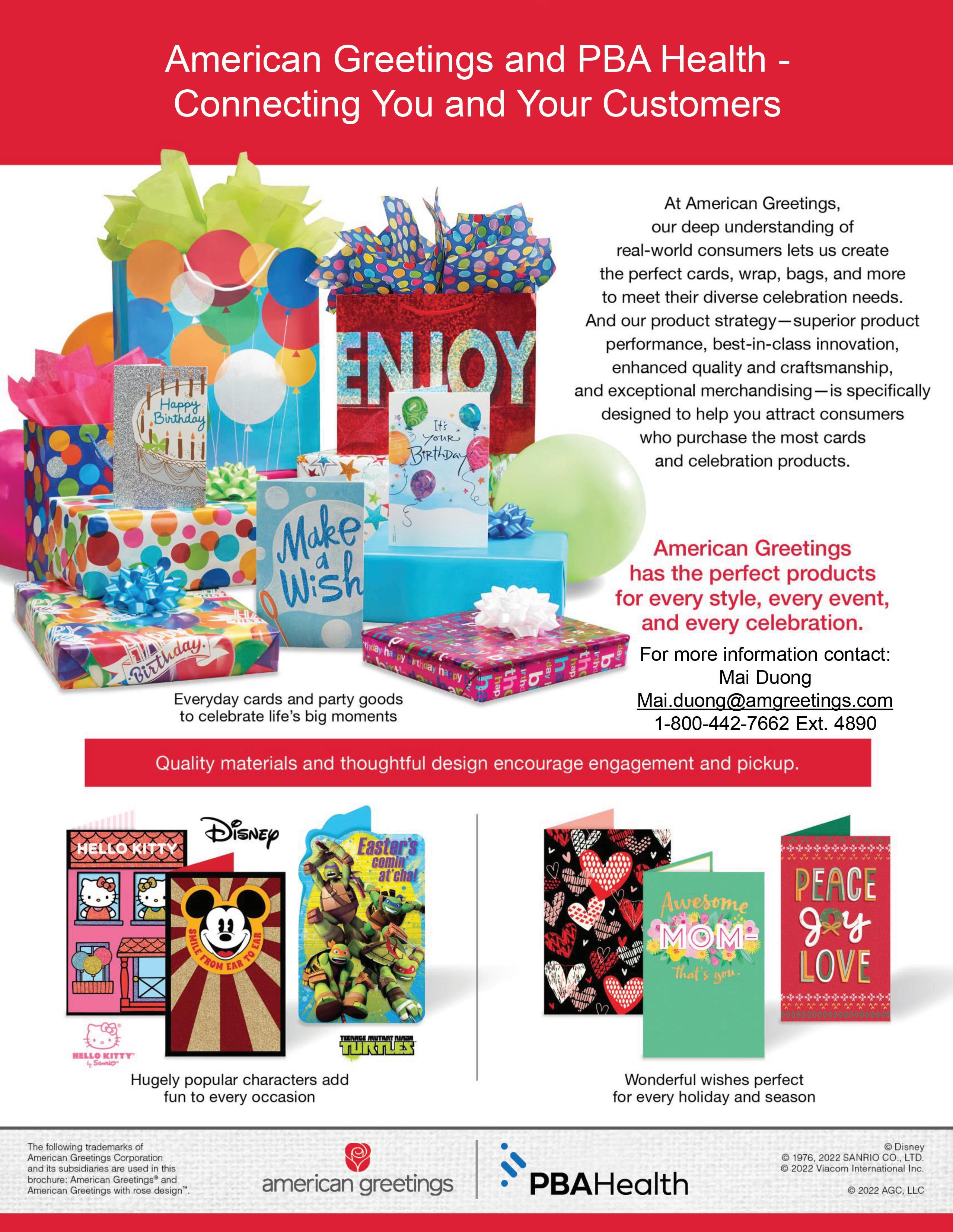MENTORING A JUNIOR PARTNER
Guiding the future of your pharmacy
QUIT FOR GOOD
5 ways to start a smoking cessation program

Mental Health
Providing for your patients
VOL. 12 ISS. 2 | JUNE 2023
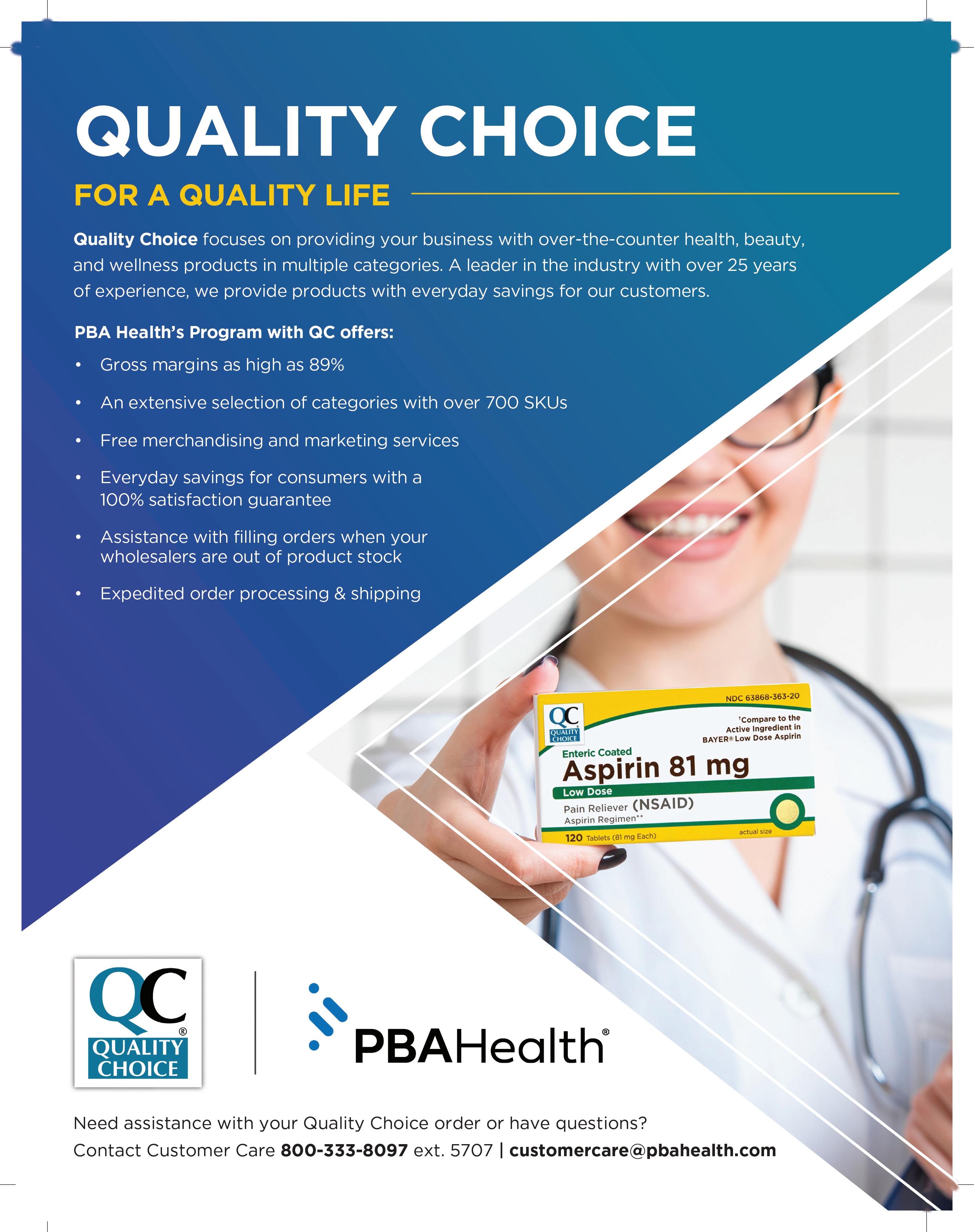

CONTENTS NEWS | Cracking Down on Copycats FDA says “No” to copycat semaglutide TRENDS | Diagnostic Testing A must-have revenue booster RETAIL | Leveraging Non-Pharmacy Assets Happy customers, happy profits SOLUTIONS | Diabetes Management Helping patients stay steady with CGMs SPOTLIGHT | Arthritis Care How your pharmacy can help MONEY | Mentoring a Junior Partner Guiding the future of your pharmacy OUTLOOK | Quit For Good 5 ways to start a smoking cessation program 06 08 12 15 26 29 32 FEATURE | Mental Health Care Providing for your patients 19 DEPARTMENTS ON THE COVER 3 ELEMENTS | The business magazine for independent pharmacy | JUNE 2023
VOLUME 12, ISSUE 2
JUNE 2023
PUBLISHER & EDITORIAL DIRECTOR
Matthew Shamet EDITOR
Gina Klein
GRAPHIC DESIGNER
Logan Whetzal
CONTRIBUTING WRITER
Cecilia Vigliaturo
ON THE WEB
The DSCSA
The pharmaceutical industry is quite complex. And due to its colossal size, it can be a challenge for industry leaders to stay on top of quality standards, which can result in counterfeit medications.
INTERESTED IN ADVERTISING?
Pharmacy Business Loans

Whether you’re in the market to purchase your own independent pharmacy, or if you just need financing to remodel, finding the right pharmacy business loan can seem daunting.
elements@pbahealth.com Follow
Forming Unexpected Relationships
When you think of developing a partnership with other organizations, you might think of your local hospital, physicians’ group, or community center. But it’s prime time to think differently and act bigger, albeit in a smaller way.
business magazine for independent pharmacy
The
Elements magazine for pharmacy business tips and advice, news announcements, industry information, and exclusive offers. E
ELEMENTS
Elements magazine is published quarterly by PBA Health. 2023 PBA Health. All rights reserved. Neither this publication nor any part of it may be reproduced without written permission by PBA Health. ©
Dependable deliveries to meet your patients’ needs.

Commitment






Aligned with manufacturers’ estimated shipping commitments.





















Safety


Guaranteed Channel Integrity® ensures safe, reliable products for your patients

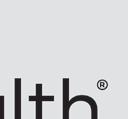























































Don’t ah-choo this season
Patients From The Flu
Program Advantages
MyFluVaccine® you can take control and manage your flu inventory with ease while meeting your flu clinic demands. Our revolutionary online vaccine ordering platform paves the way to help you improve your patients’ care. MyFluVaccine® (MFV) is a program of FFF Enterprises Inc., the nation’s largest and most trusted distributor of flu vaccines and critical-care biopharmaceuticals. YOU PICK THE PRODUCTS • YOU PICK THE QUANTITY • WE DELIVER (800) 843-7477 | FFFenterprises.com ©2023 FFF Enterprises Inc. All Rights Reserved. FL979-AB 050923 MYFLUVACCINE.COM
ts: Choice
Protect
MyFluVaccine®
With
Benefi
Confidence
Multiple presentations from top manufacturers.
CRACKING DOWN ON COPYCATS
FDA says “No” to copycat semaglutide
Threats of legal action have been made by a growing number of states against pharmacies making or dispensing unauthorized, copycat versions of the two weight-loss medications Ozempic and Wegovy.
Both Ozempic and Wegovy are injections containing the active ingredient semaglutide. Ozempic is approved to treat Type 2 diabetes in adults. Used along with diet and exercise, the drug improves glycemic control. Wegovy is a higher-dose version that’s approved specifically for the treatment of obesity. However, they’re not interchangeable, especially if taking Ozempic for Type 2 diabetes. Wegovy isn’t approved for that.

WEGOVY AND OZEMPIC: WHO IS ELIGIBLE?
Candidates for Wegovy:
• Must have a body mass index (BMI) of 30 or above. If BMI is 27 or higher and they have additional health risks, then they’re eligible to get a prescription.
If they don’t meet the criteria, they would be using it off label. However, if their healthcare provider believes they need it, it’s okay.
Candidates for Ozempic:
• Must have Type 2 diabetes
• A1C level is uncontrolled with other interventions
• At high risk of having or developing cardiovascular disease
• Have kidney disease or heart failure
With an ongoing shortage of semaglutide, some U.S. compounding pharmacies are using a different form of the drug that’s not FDA approved. The FDA sent a letter to states informing them the ingredient is approved for use only in its “base form,” and pharmacists can only get it from Novo Nordisk, the patent holder of Ozempic and Wegovy. Therefore, it isn’t possible to make because Novo Nordisk doesn’t share the drug ingredients with compounding pharmacies.
What’s concerning regulators is that some medications are made using semaglutide sodium salt, which is a cheaper and modified version of the compound that’s used for scientific research and not intended for human use. In fact, no FDAapproved drugs contain semaglutide salt because the salt version of semaglutide isn’t regulated, monitored, or tested by the FDA. So, patients really don’t know what they’re getting. The warning by state regulators means compounding pharmacists who are making unauthorized versions of Ozempic and Wegovy could face a fine, be put on probation, or lose their license to dispense medications. However, no pharmacies have been fined so far.
As of now, no one has reported if any consumers have been harmed by the compounded versions. But states are cracking down and telling compounding pharmacies to stop making the unapproved versions of the drug. If they don’t, they will face legal or regulatory consequences.
NEWS
6 pbahealth.com/elements

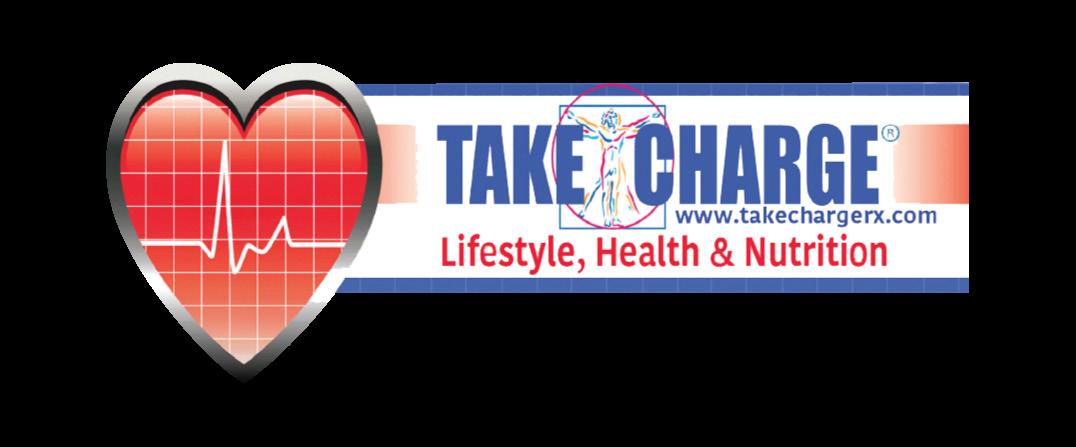
Help your patients Take Charge® of their health. A clinical weight-loss program is just the prescription for your patients to live a healthier life. The Take Charge lifestyle modification program combines health education and biometric analysis with lifestyle counseling from a healthcare professional. It helps your patients while creating revenue for your pharmacy. • 70/30 revenue model • 3 tiers of options • Less time for pharmacist • Full training for your staff • Digital education and assessment tools Learn more about joining with Take Charge. Schedule a Zoom webinar at your convenience. marvin@takechargerx.com • 800.782.3444 • takechargerx.com
DIAGNOSTIC TESTING
A must-have revenue booster
The days are long gone when a pharmacist’s job consisted solely of dispensing and managing prescription medications. Your role today is much more holistic, thanks to a more rounded education.
Nowadays, patients can visit your independent pharmacy for numerous healthcare services, including immunizations, weight-loss programs, medication therapy management, and point-of-care (POC) testing. The latter has become significantly more important since the beginning of the pandemic, which raised consumer awareness of the role testing plays and encouraged them to take health care into their own hands. Patients are now taking advantage of rapidly developing technologies to track, diagnose, and manage their health.
The four primary goals of POC testing are behavior modification, disease identification, disease monitoring, and reduced barriers to care. POC testing produces reliable results within minutes to aid in the identification and monitoring of acute infections or chronic diseases. This data can be used to improve services, target marketing efforts, and identify potential business opportunities. And with the physician shortage across the nation, your pharmacy becomes more valuable while alleviating some of the burden on physicians and emergency rooms.
“From the pharmacies’ perspective, I think whenever you can provide a healthcare solution service that’s affordable, accessible, and appropriate, it builds loyalty to that pharmacy and builds your presence,” said Cheryl Miller, Vice President of retail sales and marketing at QuidelOrtho. “Pharmacists are already trusted in their community. Having the ability to bring testing in really gives your community more access points.”
When it comes to pharmacy-based POC testing services, what you’re allowed to do depends on state-level regulatory requirements. Your state determines whether you can order tests, administer lab tests, interpret lab test results, and prescribe medication based on the results of a lab test. The requirements for POC testing in pharmacies depend on where you live, and they may include collaborative practice agreements (CPA), additional certifications, or written protocols.
Be aware that when you begin trying to incorporate POC testing into your pharmacy, difficulties can arise. You first need to file for a Clinical Laboratory Improvement Amendment (CLIA) waiver. You can find a list of CLIA-waived tests by visiting the U.S. Food & Drug Administration website. You will then complete the CLIA application and mail it to your CLIA State Agency contact based on your pharmacy location. You also have to pay applicable certificate fees every two years and update CLIA waivers each time a new test is added to the workflow.
In addition to acquiring a waiver, policies and procedures are needed for training your staff, especially if you’re working in conjunction with providers. It’s also important to note that other healthcare providers may be resistant due to a lack of awareness or trust in your pharmacy’s service.
Community pharmacists across the nation are already offering POC testing services. But before you prepare your pharmacy to follow suit, several things should be considered. Ensure protocols are in place to prevent liability. They must define POC testing procedures for each device used and any disease state encountered. Follow manufacturer test instructions and obey CLIA regulations. If you’re providing vaccinations, you should already have policies in place.
TRENDS
8 pbahealth.com/elements
Make sure you know where POC testing will take place in your pharmacy, what tests will be administered, what services local competitors are providing, what training your staff will need, whether patients will receive a prescription medication following test results, and so on.
Last but not least, if you really want your POC testing program to be successful, you will need patient referrals. Patient referrals are critically important to the success of POC testing in your pharmacy.
HELPFUL LINKS
Interested in learning how to obtain a CLIA certificate of waiver?
This link is for you.
Cms.gov
Looking for the list of CLIA-waived tests?
Follow this link:
Accessdata.fda.gov
OPPORTUNITIES FOR YOUR INDEPENDENT PHARMACY
The growth of at-home diagnostic tests has given buyers better diagnostic knowledge. Capture market share by prepping for the future while considering the buyer. Here are a few ways to profit from this growing diagnostic trend:

Get ready for swift change
Community pharmacies like yours can expand self-testing kits into additional offerings and further establish your expanding role in health care. Adaptation is key to adjusting quickly to a market facing amazing change.
Offer thorough solutions
Patients who purchase a diagnostic solution often want to know more than whether they have a specific illness or disease. What they really want is to feel better. So, the most desirable solution would be a complete solution to the problem, including all elements, from diagnosis to treatment. For example, when you link testing and telehealth, you make it easy to get the counseling that’s needed. The more that you
link at-home diagnostics to complete solutions, the more successful you’ll be in building your diagnostics revenue.
Provide more patient counseling and education
You are well-positioned to give your patients valuable insights related to diagnostic testing through educational programs. This is an important part of effective at-home diagnostics usage. Inform your patients through one-on-one conversations, written material, and even large forums. Your pharmacy can build its diagnostics category business through counseling and education. This will get rid of confusion and help customers understand the tests, their results, and the next steps to take.
Try category management
COVID-19 at-home diagnostic tests are the beginning of an expanded retail pharmacy category. A proliferation of at-home combined tests for COVID-19, flu, and RSV will be popping up soon, if they haven’t already. But where should they reside on pharmacy shelves? An essential part of this emerging category will likely be multi-indicator tests for various disease types, such as respiratory illnesses or STDs. Your best bet regarding shelf space for at-home tests is to try a few different approaches. Set up a whole at-home testing section in one area, or try placing specific tests in condition-specific sections.
The Sofia 2 Analyzer tests for coronavirus, influenza, pregnancy, strep, Lyme disease, and more.
9 ELEMENTS | The business magazine for independent pharmacy | JUNE 2023
LEVERAGING NON-PHARMACY ASSETS
Happy customers, happy profits
As an independent pharmacist you want your pharmacy to stand out. You want to draw people in with your store’s offerings and generate profit that you can take to the bank.
When the market is tight, you need to make strategic investments that decrease costs and improve your customers' experience. When doing so, invest in areas that address consumer demands and the changing industry. Asking your customers is the first step.
“Getting in touch with your customers is the best source,” said Dave Wendland, Vice President, strategic relations and member of the Hamacher Resource Group (HRG) owner group. “Ask every customer who walks through the checkout, ‘Is there anything else that you’d like for me to stock in my store?’ That simple question, puts you in touch with customers, and they are the best source because they’re going to tell you.”
You may have customers tell you they want to see pet supplies in your store, a hardware section so they can avoid the big-box stores, or seasonal or local items because they don’t know where else to get them.

Also, don’t shy away from shopping the aisles of other stores. You can see a lot just by looking around. Here’s how:
PAY ATTENTION TO DETAIL
Wendland advises pharmacists to truly examine other retailers. “Shop in your community. If you go into a local hardware store, the local grocer, or the local bakery, ask yourself, ‘What is on the shelves here that could find a home in my store?’” he said.
RETAIL
10 pbahealth.com/elements


OTC
LEARN PATIENTS’ WANTS AND NEEDS
Your non-pharmacy offerings can range from durable medical equipment to sundries to locally made products that will make your pharmacy unique. Products like these can boost your front-end sales and help your pharmacy succeed. The trick is picking the right products that your customers will want to buy.
“I would look at niche products that are in the 40 to 50 percent margin range minimally. It’s not about quantity of turns, it’s about serving the need and generating margin every time that product is sold,” Wendland said. “Partner with a local provider, such as a farmer who raises honey, and then display the natural honey. If that doesn’t carry a 50-percent margin, I would question whether it deserves space in the store.”
ADD SOMETHING NEW
“I encourage you to test and fail. I encourage you to try something because your intuition tells you it may be a good item. But be cautious that you’re not overcommitting space, resources, and so on. There’s no reason that you can’t bring in a couple of items and put them in a really cool location,” Wendland said.
If you’re bringing in a new line and you’re excited about it, don’t hide it in the corner. Put it front and center. One good place to stock new products is the pharmacy counter. Ninety percent of the patients who go into a pharmacy head to the prescription area first. Make sure you have an end cap or a counter display there. You can also set up a display under or near the pharmacy counter where you can introduce a new product and customers can test it.
“You have to have a plan to place it properly, communicate it broadly, and activate that customer to say, ‘Yes, I’m willing to try it.’ Listen closely when the customer says, ‘That makes no sense to me. I’m not interested in this product.’ Don’t keep pushing a cart up a hill if that hill is too steep. On the other hand, don’t give up too quickly,” Wendland said.
When you stock a new product in your pharmacy, be sure to give it a 60-day period to cycle through enough customers to get feedback. If it hasn’t sold any units after 60 days, or if it has very little interest and you feel it’s just taking up space, move it out. Then, try something else.
“A 60-day period is a good time to test and fail or test and learn,” Wendland said. “It has to be something that carries a strong margin when you bring it into your store. But more importantly, it has to be something consumers will buy that generates margin that you can take to the bank.”
THE TRICK IS PICKING THE RIGHT PRODUCTS THAT YOUR CUSTOMERS WILL WANT TO BUY.
But even with these, the market can become iffy. That’s why it’s so important to stock products that are coveted by your customers, such as herbal supplements, reading glasses, or durable medical equipment (DME). For example, the market for DME is expected to grow. That means you have a tremendous opportunity to create an additional profit center by offering DME in your pharmacy.
Patients who are managing chronic conditions or are in rehabilitation after a surgery or injury often need more than just prescriptions. And if you’re already filling their prescriptions, you will also be their source for non-prescription needs. That means you’ll need products that will assist your patients with limited mobility such as walkers, canes, and wheelchairs. Patients may also require toileting products like commodes or bedpans. By providing DME products in your pharmacy, you and your staff are much more involved and proactive in your patients’ overall well-being.
High-Profit, Front-End Products
• CBD
• Durable medical equipment (DME)
• Essential oils
• High-end vitamins and supplements
• Mother and baby products
• Personal protective equipment (PPE)
• Seasonal items
• Wound care
High-Profit Services
• Compounding
• Long-term care
• Point-of-care testing
• Veterinary medicine
HRG, Independent Pharmacy Research Study, Category Performance infographic, April 2021
CATEGORIES CUSTOMERS SHOP AT THEIR INDEPENDENT PHARMACY – PERSONAL CARE
4% 51% 27% 48% 39% 21% 11% Hair Color 12 pbahealth.com/elements
Based on 323 independent pharmacy shopper respondents. Respondents selected all that apply.
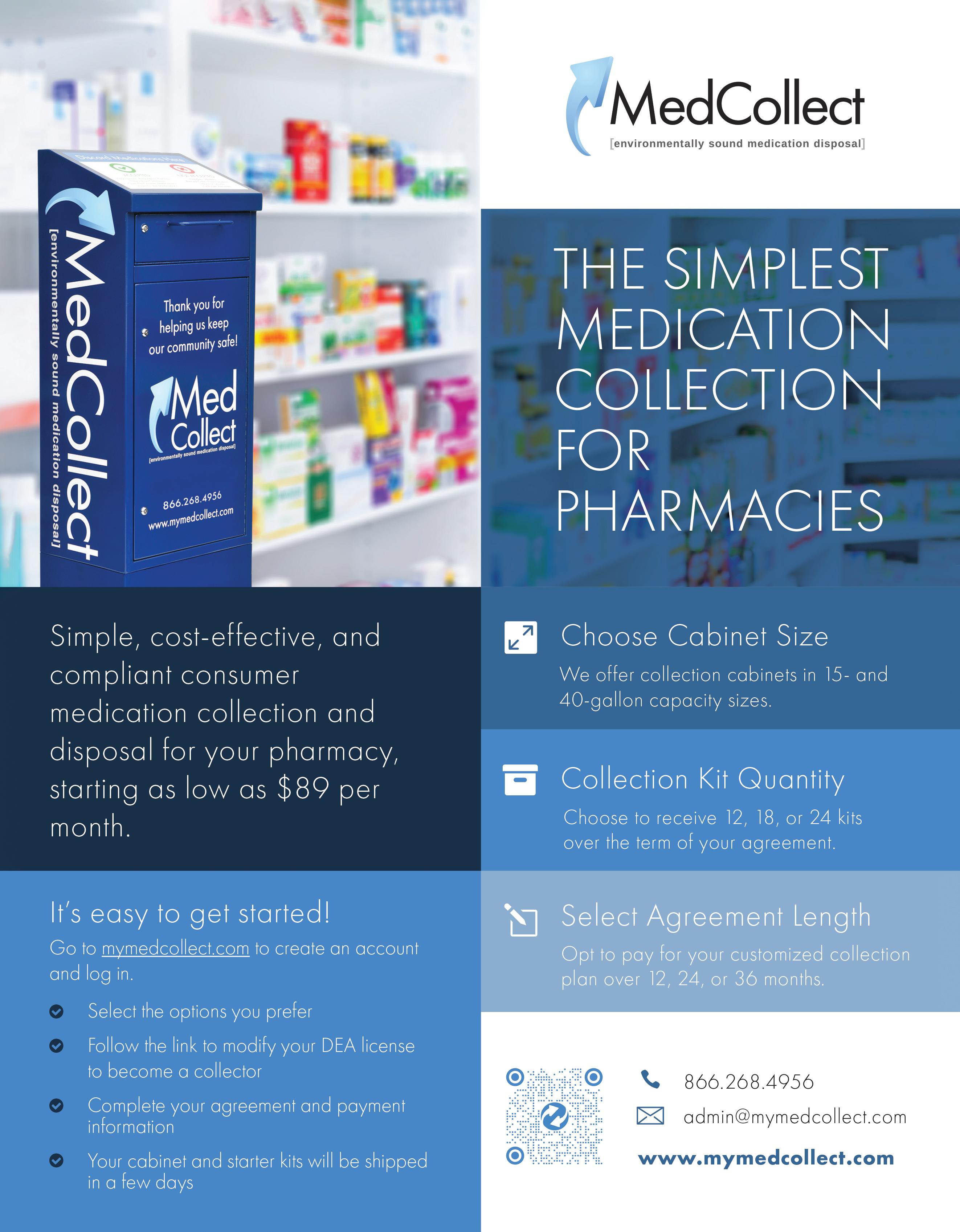
DIABETES MANAGEMENT
Helping patients stay steady with CGMs
Diabetes is a chronic health condition that affects more people today than ever before. About one in 10 Americans have the disease, and one in five people don’t know they have it. This is an area where your independent pharmacy can help.
You can screen patients for prediabetes, test their blood glucose levels, advise patients about diabetes self-management, and help them take their medicines as prescribed. You can also provide information about lower-cost options for medicines and medical supplies.
Monitoring blood glucose levels is a necessary part of daily life for your patients with Type 1 or Type 2 diabetes. The traditional way is for them to prick their finger and check their levels manually. But that can be a pain, literally. An alternative for your patients is continuous glucose monitoring (CGM). CGMs are designed to be worn and used over long periods of time. They’re a simpler and much more convenient option, albeit a bit pricier.
Monitoring blood glucose and insulin administration has transformed from numerous finger pricks in a day to a few swipes on a cell phone. CGMs use a small sensor that’s inserted under the skin. The sensor automatically tests and records your patients’ glucose levels throughout the day. It can also increase the length of time spent in a normal range. And with real-time feedback, patients can take steps to
improve their blood glucose levels and decrease the risk of such conditions as hyperglycemia and hypoglycemia.
CGMs were once limited to certain patients. However, today they’re much more widespread because they’re more available and more affordable. In fact, many are now available at local pharmacies. And while anyone can purchase a regular blood glucose meter, your patients will need a prescription from their doctor for a CGM system.
AFFORDABILITY OF CGMS
While CGMs can cost anywhere between $1,000 to $3,000 a year, it really depends on the CGM brand they use. Some systems cost more. Be aware, however, that they will also need to purchase a receiver or reader, replaceable sensors, and a transmitter.
If a patient manages their diabetes at home, they may need other essential supplies that will add to the overall cost. These items include:
• Adhesive skin patches to hold the CGM in place
• Blood glucose meter, lancets, and strips to calibrate the CGM
• Insulin pump
• Smart device (i.e. smartphone) connected to a CGM for real-time data
SOLUTIONS 14 pbahealth.com/elements
If you have patients with Type 1 diabetes, they may opt for another option, such as an artificial pancreas or an automated insulin delivery (AID) system. An AID system includes:
• CGM
• Insulin pump
• Program that determines how much insulin they need and signals the pump when to deliver the insulin
The AID system imitates a healthy pancreas. It can help increase the amount of time their blood sugar is in a normal range. It can also help prevent diabetes-related complications. The cost of an AID system is around $6,000 a year, and sometimes more, without insurance.
Most health insurance plans will cover some or all of the cost of diabetes equipment and supplies, including blood glucose meters (BGMs) and CGMs.
HOW YOU CAN HELP
CGMs can do a lot for your patients in helping them manage their diabetes, but it all begins with you and their physicians. As their community pharmacist, you can help identify patients who might qualify for CGM. You can also assist patients and their providers with selecting the device that’s most appropriate for them. You can provide counseling to your patients who are on CGM and interpret CGM results in a way that they’ll understand.
Here are a few of the best CGM devices on the market this year: Abbott Freestyle Libre 3: This newly updated CGM features the world’s smallest, thinnest glucose sensor that’s about the size of two stacked pennies. Patients don’t have to do anything to see their glucose readings. Instead, the system automatically sends real-time, minute-by-minute glucose

15 ELEMENTS | The business magazine for independent pharmacy | JUNE 2023
readings to a compatible smartphone without scanning. It has the strongest Bluetooth range compared to other CGMs, and it uses significantly less plastic than its predecessors.
Ascencia Eversense E3: While all CGM systems use sensors that are inserted into the skin, the Eversense sensor is inserted by a trained healthcare provider completely under the skin and lasts up to six months. It gives real-time blood sugar (glucose) readings every five minutes for patients with diabetes. It consists of an implantable fluorescencebased sensor, a transmitter, and a mobile app for displaying glucose numbers, trends, and alerts on the patient’s mobile device. This new version can be worn for up to 180 days.
Dexcom G7: The new G7 is 60 percent smaller and easier to wear with fewer components. The 30-minute sensor warm up is the fastest on the market, and it has a 12-hour grace period to replace finished sensors. The mobile app has been redesigned and simplified; alert settings have been improved for enhanced discretion; and it has a smaller, more vibrant receiver, and smaller plastic components and packaging resulting in less waste.
Medtronic Guardian™ Connect system: The Guardian Connect only contains a sensor and a transmitter, with no reader device. Patient glucose-level readings can only be viewed on the Guardian Connect app, which makes it convenient to share glucose readings and alerts with family and friends. Up to five people can sign up to receive text messages for low-glucose alerts. The Guardian Connect transmitter sends glucose readings to the app every five minutes via Bluetooth. This system is also waterproof up to 7.8 feet for 10-minute periods.
While CGMs are helpful, patients can easily get overwhelmed using them. Some may not understand how they work or how their readings are different from a traditional fingerstick glucose reading. As an independent pharmacist, you are trained and skilled to guide your patients through the process. You can encourage them to set alarms and alerts, show them how to understand the data on their device, and how to share that data.
Empowering your diabetic patients to learn from their CGM statistics will give them confidence. By seeing the direct effects of foods they eat, medications they take, and their physical activity in their readings, it will empower them to engage in healthier behaviors.
NONDIABETICS AND CGMS
Can CGMs help those who aren’t diabetic? There are some people who use CGMs who don’t have diabetes. Athletes sometimes use these devices to help with their mental or physical performance. Others use them as a way to help prevent diabetes. However, health insurance plans may not cover CGMs if you:

• Don’t have diabetes
• Have prediabetes (abnormal blood sugar levels)
• Develop gestational diabetes (a type of diabetes that can occur during pregnancy)
Some studies do show benefits for the use of CGMs by nondiabetics, but only in these specific healthcare situations:
• People with end-stage renal disease may use CGMs during hemodialysis, where changes in blood sugar concentrations can help guide treatment.
• People who have undergone a kidney transplant may experience high blood sugar. A CGM can monitor blood sugar and flag patients at risk for posttransplant diabetes and graft failure.
• Children with epilepsy who are treated with a ketogenic diet may wear CGMs to monitor blood glucose levels to help manage their diet.
16 pbahealth.com/elements
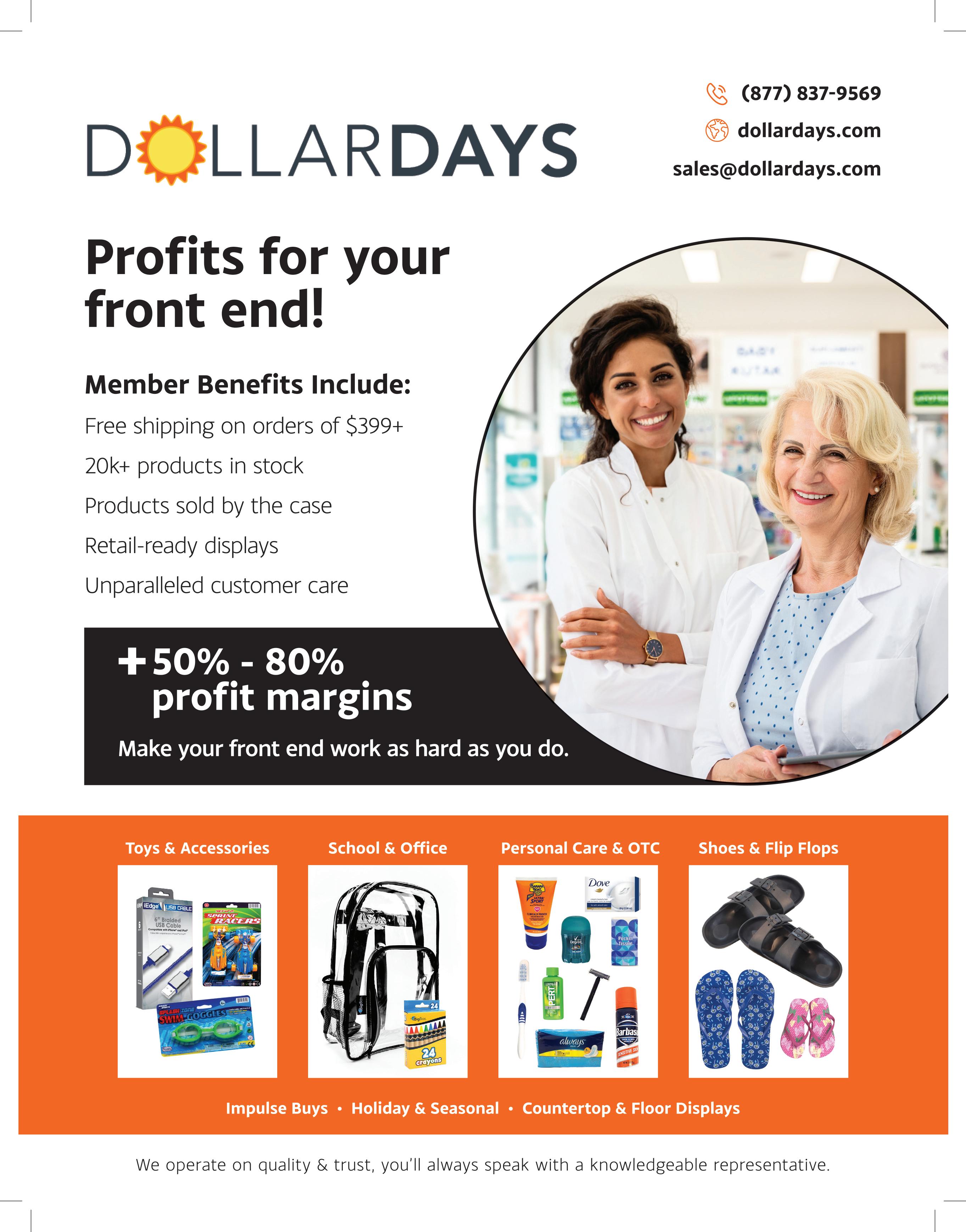

FEATURE 18 pbahealth.com/elements
MENTAL HEALTH CARE
Providing for your patients
Mental health illnesses are among the most common health conditions in the United States. In fact, statistics show that mental health conditions are on the rise while access to care is becoming even more difficult.
The widespread belief is that pharmacists do little more than dispense anti-depression or anxiety medications for those experiencing mental health illnesses. However, the truth is that mental health patients see their pharmacists more often than their psychiatrists or physicians. More roles are emerging for independent pharmacists like you to serve as important access points for patients experiencing mental health crises. The doors are open for you to offer care for those who need it.
“The independent pharmacist has regular interaction with their patients and customers who come into their pharmacy. They really have a clear lens into someone’s behavior. It could be their mood, cognitive function, or overall health. They really get to know their patients on a very personal level,” said Dan Nunn, founder and CEO of Kleen Bill. As a pharmacist, you serve as an educational resource for your community. You are in a great position to identify early signs of mental health problems in your patients, such as anxiety, depression, post-traumatic stress disorder, or substance or alcohol abuse. You can also help screen patients’ medication lists for drugs that can potentially exacerbate mental illness. When you see all of
the medications your patients are having filled, including prescriptions from multiple providers, you’re able to observe and make recommendations to help control the cumulative side effects.
If your patients express concerns over their mental health, gauge the nature and severity of any symptoms before deciding on an appropriate action. Encourage them to seek help through the proper medical channels. You can guide them to the appropriate care provider.
“The pharmacist is part of a team. They’re positioned to offer insight. If they see a patient decline, they most certainly should reach out and try to help that person find a solution. That’s part of the reason they’re there. They can recommend their patient speak to a professional, or they can give them a hotline number,” Nunn said. “The pharmacist has access to all of the local services that are available to help a patient who may need some type of mental health support.”
The next step is to closely monitor your patient’s medication adherence. Monitoring your patients for adherence is important, as patients with mental health conditions typically have low adherence rates with their psychiatric medications. Nonadherence includes patients who don’t fill initial prescriptions, adjust their own dosing regimens, or completely stop their medications. The cost of medications, side effects, and patients’ beliefs regarding the medication are some of the reasons for nonadherence.
19 ELEMENTS | The business magazine for independent pharmacy | JUNE 2023
The World Health Organization has laid out five sets of factors that affect patients’ medication adherence.
• Social and economic-related factors, such as poor socioeconomic status, a low level of education, and unemployment.
• Healthcare system/healthcare team-related factors, such as poor medication distribution systems and overworked healthcare providers.
• Therapy-related factors, such as duration of treatment, previous treatment failures, and the immediacy of beneficial effects.
• Condition-related factors, such as severity of symptoms, level of disability, and availability of effective treatments.
• Patient-related factors, such as disbelief in the diagnosis, forgetfulness, and low motivation.
If not appropriately supported by health care, patients face risks that can potentially be life threatening. Most of the care needed for chronic conditions is based on patient selfmanagement, use of medical technology for monitoring, and changes in their lifestyle. By improving adherence, patients’ safety is enhanced.
You can help your patients better adhere to their medications by recommending the use of pill boxes that have compartments for each day of the week. It’s a great way for them to organize their medications, and it will let them know if they missed a day. You can also encourage them to keep a list of the medications they take and to include the name of the drug, the dosage, when they take it, and what it’s for. Then, advise them to give a copy to their family members and physician in case of an emergency.
Do you have patients who use more than one pharmacy?
If so, the CDC’s recommendation is that you suggest your patients only use one pharmacy. This ensures all patient records are in one single location. This can help you lessen any adverse events, and better track your patients’ progress over time.

STATISTICS RELEASED BY THE 2023 STATE OF MENTAL HEALTH IN AMERICA SURVEY
• 21% of adults (roughly 50 million people) are experiencing at least one mental illness.
• 55% of adults with a mental illness have not received treatment.
• 5.44% of adults experience severe mental illness.
• 4.8% of adults (over 12.1 million) have reported serious thoughts of suicide.
20 pbahealth.com/elements





If you’re nervous about helping patients with their mental health, think about partnering with mental health providers. You can join with psychiatrists, psychologists, therapists, social workers, or mental health clinics. Here’s why this is important:
BETTER UNDERSTANDING AND CARE
By collaborating with providers, you will better understand a patient’s situation and prescriptions. You can educate the patient, counsel them on potential side effects, and monitor their adherence. You can also keep the provider in the loop
by feeding information back to them. If an issue were to arise, your relationship with the provider will make it easier to communicate and collaboratively resolve the issue. This results in better care for the patient.
LEARN FROM THE EXPERTS
As a pharmacist, you have expertise in serving and educating your patients on many things in your pharmacy. However, you’re not an expert on mental health. But by working with mental health experts in your area, you’ll have resources to contact for assistance with any mental health matters.
MEDICATIONS TO LOOK OUT FOR
Many types of medications are associated with causing and worsening depression symptoms as a side effect, even in people who aren’t prone to depression.
Because depression is common in patients with medical illness, it can be tough to know for sure if these medications are to blame for the mood symptoms.
Here are some common signs to watch for: These include:
• Anticholinergic drugs
• Anticonvulsants
• Benzodiazepines
• Beta-blockers
• Corticosteroids
• Drugs that affect hormones
• Parkinson’s drugs
• Proton pump inhibitors (PPIs) and H2 blockers
• Statins and other cholesterol-lowering drugs
• Stimulants
• Anxiety
• Fatigue and low energy
• Feelings of guilt or worthlessness
• Feelings of hopelessness or helplessness
• Irritability and restlessness
• Loss of interest in things once enjoyed
• Problems with appetite or weight
• Problems with sleep
• Problems with thinking, memory, and concentration
• Thoughts of death or suicide
22 pbahealth.com/elements
FIVE MENTAL HEALTH APPS
If you sense a patient needs help, but they’re afraid to reach out to a specialist, recommend one of these apps. Each one has their own unique options for those who need a place to chat with others, talk with a therapist, meditate, or de-stress.
Headspace
This is a favorite because it’s affordable, has a wide range of resources, and excellent expert-informed content. You can de-stress, learn how to wake up and get energized, and get tips on increasing your movement throughout the day.
TalkSpace
This app is a leader in the therapy space due to its convenience, range of services, and easy therapist-matching process. Talkspace offers a variety of plans, however the pricing isn’t a fit for everyone and sessions are only 30 minutes long. The company is in-network with many major insurance plans.
Circles
This app is a great mental health app for addiction. It offers support groups for a variety of concerns, it has sobriety-specific groups, coping tools, and more. Your first session is free, and then they offer a membership plan.
Calm
Calm is a wonderful sleep app with a dreamy and soothing aesthetic that specifically targets sleeplessness. It features a wide range of meditations and sleep stories for kids and adults alike. Plus, therapists, meditation experts, and coaches are all featured on the app.
Sanvello
This mental health app has resources designed to decrease anxiety symptoms by using a wellrounded approach that focuses on self-care, peer support, coaching, and therapy. It’s also an innetwork with some insurance providers. A free trial is available, and the monthly fee is on the low end.
GROW YOUR BUSINESS
When you partner with providers, your pharmacy business will expand. Working with mental health providers will help them see the close, personal care you provide their patients. Your pharmacy will flourish by building that kind of trust.
“With limited or low access to quality, affordable care in a community, pharmacists use their experience and expertise to understand what their patients need," said Nick Smock, PharmD, MBA, President and CEO of PBA Health. “Businesses like Walmart and Best Buy are offering solutions to the market that were unthinkable 10 years ago. The question is, what can we as pharmacists offer in the form of behavioral or mental health? Telehealth may be a possibility and an opportunity without the cost of an actual clinic and wouldn’t compete with physicians.”

23 ELEMENTS | The business magazine for independent pharmacy | JUNE 2023
PRACTICING SELF CARE IN YOUR PHARMACY
The overall health of your pharmacy relies on the mental wellbeing of you and your team. That’s why it’s so important to make mental health a priority in your pharmacy. Try following the tips below to keep your pharmacy from burnout.
MAKE
Overworking your staff can take a toll on their mental health. In fact, over 90 percent of Americans feel overworked, and over 70 percent say the pressures of their workplace affect their personal lives. Overworking can wreak havoc on your mental health. It can lead to depression, anxiety, exhaustion, decreased job performance, high blood pressure, and worse. That’s why it’s so important for you and your staff to take time off to avoid burnout.
There are numerous ways to make your staff feel appreciated. Give raises to well-deserving team members, have a pizza party, provide lunch for your team on a regular basis, reward hardworking or struggling team members with gift cards to their favorite places, and/or give them a handwritten note thanking them for being such an awesome employee.
When the pressure and demands of work build up, your staff might keep their stress hidden. Therefore, you don’t know who’s struggling and who isn’t. While you can’t force your staff to share what they’re experiencing, you can be understanding and accepting. Be sure they know that your pharmacy is a safe space where they can open up to you without judgment, and that you’ll do your best to support their needs.
Don’t put unnecessary pressure on your staff. Instead, regularly talk to them to get their perspective on their workloads. This will give you a better idea of what you can add to their plates without overwhelming them. As you focus on everyone else’s mental health, be sure to pay attention to your own. A work/life balance can be challenging for many independent pharmacists. Implement the mental health advice you give to your patients and staff, and regularly check in with yourself to assess the state of your mental health. Adjust things as needed so you can set an excellent example for your patients and staff by making mental health a priority. You’ll provide better care for others when you’re at your best.
All of your pharmacy staff should be taking at least one break during the workday. However, when it gets busy and everyone is struggling to keep up, breaks are often skipped. Make it a goal to keep these occurrences to a bare minimum, especially since federal and state laws govern mandatory break periods. Downtime is important, especially in a high-stress field like pharmacy. By reinforcing breaks, you’re sending your staff the message that their well-being is just as important as the well-being of your patients.
Kleen Bill helps pharmacists provide virtual care for their patients. Pharmacists can offer on-demand, virtual healthcare services for families that include telehealth and teletherapy services, veterinarian visits, and even legal services. Kleen Bill is currently accepting pharmacies to be a part of their pilot program over the next six months.
TIME OFF A PRIORITY MAKE YOUR PHARMACY A SAFE SPACE TAKE BREAKS MAKE YOUR STAFF FEEL APPRECIATED
24 pbahealth.com/elements
BE MINDFUL OF EXPECTATIONS AND GOALS





ARTHRITIS CARE
How your pharmacy can help
According to the Centers for Disease Control and Prevention (CDC), one in four U.S. adults have some form of the more than 100 types of arthritis. The most common form is osteoarthritis, which affects approximately 30.8 million adults in the U.S. and costs up to $81 billion annually. Rheumatoid arthritis is next in line, with about one out of every five people suffering from swelling, pain, and stiffness in joints.
Rheumatologists are busy, and with limited time to spend with patients, it’s not uncommon for patients to have

SPOTLIGHT 26 pbahealth.com/elements
more medication questions after they’ve left the doctor’s office. This is where community pharmacists like you can help bridge that gap. You see patients up to five times more frequently than primary-care doctors. This means you are a critical part of your patients’ treatment plans. And as a healthcare provider, you are perfectly prepared to guide your patients to various forms of treatment and management for their arthritis or joint pain.
“Pharmacists have a major role in the care of patients’ arthritis,” Dr. Paul S. Schmidt, University of Kansas Health System rheumatologist, said. “They’re able to facilitate communication with patients, doctors’ offices, and other players who might be involved, such as insurance companies.
“Adding a pharmacist to our team was a beneficial change to the practice. We’re lucky to have our pharmacist on staff. We’re now able to utilize their skills in patient education as it relates to the medications, injection techniques, or newer products. There are so many new arthritis therapeutics, and it’s hard to keep up with what specific devices there are, and which medications. Pharmacists are the ones who have the best exposure and can provide the best information for the patient,” he said.
He also agrees that having pharmacists handle the details of medication therapy saves rheumatologists a lot of time and makes patients feel more comfortable. Their help with the prior authorization (PA) process is also helpful. For doctors, the process of obtaining a prior authorization can be time consuming. You, however, are equipped to assist with the PA process for prescription medications and health plans in real time. And when you do, you’re able to speed up the process of dispensing the prescription. It also allows you to determine if the patient can afford the medication, thanks to the expansion of electronic prior authorization (ePA) by the National Council for Prescription Drug Programs.
“The prior-authorization process is out of hand in the U.S. right now. It’s an enormous hurdle for doctors’ offices and patients to have to contend with,” said Dr. Schmidt. “Pharmacists are very well equipped to help handle the PA process. They have all the background of the medications and a better working knowledge of how insurance works.”
In addition to educating your patients on medications, you can offer injection training. You can also answer specific questions about drug interactions they may have, show them the appropriate dosage, and demonstrate how they should store and take the medication.
“I think independent pharmacies’ capabilities are quite wide,” said Dr. Schmidt. “A lot of it is medication education, helping patients with medication interactions, potential interactions,
or concern when interaction may arise. They could be utilized when it comes to patients that have concerns about side effects or potential side effects, and both in terms of sorting out if the patients’ problems are truly related to the side effect. What happens far too often is a patient is dealing with a side effect not realizing that it is a common side effect of medicine.”
You’re also able to help rheumatologists combat the opioid epidemic. Because you’re on top of your patients’ medications, you can suspect a patient who may be abusing or misusing their medication and help them taper off and find an alternative. After all, research has shown that opioids are no better at controlling chronic back or arthritis pain than non-opioid drugs.
“There are a lot of types of arthritis. I think the pharmacists are well equipped to help identify when a patient might not be doing well and talk with them about querying their providers to be sure they’re getting the help they need,” he said.
CHECKLIST
Patient has tried non-Rx but pain persists (e.g. weight loss, increased activity, thermal modalities) Arthritis education
Source: Osteoarthritis Action Alliance
medications and supplements have been reviewed
allergies have been discussed
has been provided Current
Medication
Acetaminophen (mild-moderate pain) —Maintain < 4 grams per 24 hours from all sources
FOR PHARMACOTHERAPY CONSIDERATION
27 ELEMENTS | The business magazine for independent pharmacy | JUNE 2023
Community-based arthritis programs can also be a great asset to patients seeking pain relief and social support. They can get a lot of benefit from participating in self-management and physical activity programs in the community, such as recreation centers, senior centers, YMCAs, and residential communities. Programs like these can help improve arthritis symptoms such as pain or limitations in function. Plus, they’re widely available in communities across the U.S.
Community-based arthritis programs can be extremely helpful to patients seeking pain relief and social support. The following two websites are for you to use or suggest to patients looking for arthritis programs in their community.
• Arthritis Foundation Resource Finder Arthritis.org
• Walk With a Doc Walkwithadoc.org
“We’re moving away from pain control as the goal and moving towards functionality. I think that’s a good way pharmacists could hopefully help patients adopt a more holistic approach to management of arthritis that doesn’t necessarily involve medications,” Dr. Schmidt said.
WHAT YOU CAN DO
Here are some of the many ways you can help your pharmacy patients with arthritis.
• Discuss details of medication therapy with patients.
• Provide them with information about their medication, including possible side effects and interactions with other medications.
• Manage their pain and symptoms by recommending OTC pain relievers.
• Manage pain by suggesting lifestyle modifications, such as exercise and dietary changes.
• Look into alternative therapies.
• Ensure their medication regimen is optimized to their special needs.
• Monitor patients for any potential adverse effects or drug interactions.
NONPHARMACOLOGICAL TREATMENT OPTIONS
Arthritis education
Physical activity
Information regarding community-based resources
Exercise (non-weight bearing on the affected joint(s))
Weight loss (if overweight)
Assistive walking devices (e.g. cane)
Corrective footwear
Hot or cold therapy
Referral to physical therapy and/or occupational therapy
Source: Osteoarthritis Action Alliance
28 pbahealth.com/elements
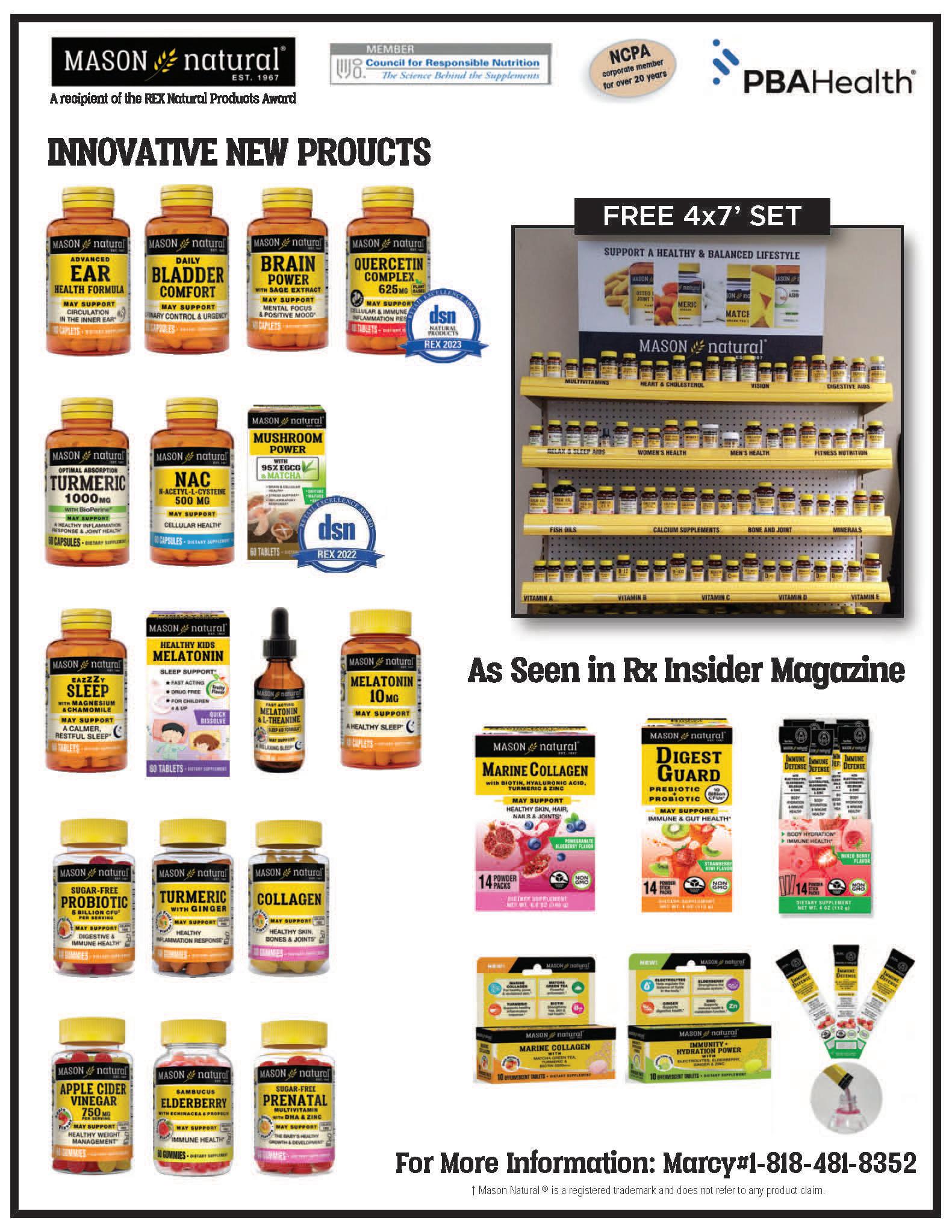
MENTORING A JUNIOR PARTNER
Guiding the future of your pharmacy
In today’s world, it’s difficult for young pharmacists to get an opportunity to buy their first pharmacy. Even with the financial capabilities, it’s not enough. There are more active buyers in the market than opportunities. Because of that, pharmacies are more often than not sold to large groups or owners with multiple stores wanting to expand further.
If you’ve ever thought about having a junior partner, it may be time to put that thought into action. Sharing your knowledge of the pharmacy field with the next generation of community pharmacists is essential.
There are great advantages for young pharmacists who are interested in a junior partnership as a pathway into pharmacy ownership. Some of them include financial support when it comes to lending and dealing with banks; expertise and experience available from the other partner(s) or group; lower financial risks that make it more affordable to buy a share in a large business; and mentors to help further their learning and development.
Pharmacists have various reasons why they may decide to take in a young pharmacist as a business partner. They may need help running their business or want to take a step back and slow down. Others may want to buy or open another pharmacy and need extra help. Then there are those who have an excellent pharmacy manager they want to “lock in.”
As a senior partner, having a junior partner is a great way to carry on the pharmacy’s legacy. Working together is critical, and you must use teamwork and compromise when making decisions.
If you decide to become a mentor, here are some tips to start you off on the right foot as you teach the junior pharmacist to become a strong and successful pharmacist:
• Establish a positive relationship: Set a good tone with your junior partner right from the start. Be friendly, approachable, and respectful. Talk with them and get to know their background, interests, and aspirations.
• Assess their skillset: Understand the strengths and weaknesses they can bring to your pharmacy. Identify areas where they need improvement and come up with a plan to help them develop those skills.
• Come up with a training plan: Write up a training plan and a timeline for your junior partner’s development. It should include training opportunities, such as shadowing, conferences, and workshops to develop new skills.
• Set clear expectations and goals: Be sure to include their responsibilities, tasks, deadlines, and other areas of focus.
• Be humble and listen to your partner: You and your partner will likely have different strengths, ideas, and knowledge in the pharmacy. Let them teach you, too.
• Encourage professional development: Provide resources or opportunities for your junior partner to stay up to date with the latest developments in pharmacy.
• Model positive behavior: Be a good role model at all times. Demonstrate how to handle difficult situations and challenges in a professional manner.
MONEY
30 pbahealth.com/elements
When you’re ready to find a junior partner for your independent pharmacy, there are several steps you can take to find the right fit for your store. Try reaching out to your professional network. Consult with colleagues or professional associations to find recommendations for individuals looking for a mentor. Social media can be a great resource for connecting with potential mentees. There are also online pharmacy groups and forums where you can find potential partners.
ARE YOU REALLY READY?
If you feel confident about having a junior partner in your pharmacy, first ask yourself these basic questions:
• Do I want the responsibility of training someone and being a mentor?
• Am I comfortable delegating vital tasks to another person?
• Do I want to develop a succession plan or sell my pharmacy outright?
• Would I trust the person who would become my junior partner?
TO
A JUNIOR PARTNERSHIP
Increased business success
By mentoring a junior partner, you can help ensure the success of your business by passing on your knowledge and expertise to the next generation of leaders. As a bonus, junior partners can bring fresh ideas to the table, helping the business stay innovative and competitive.
Improved work/life balance
You and your junior partner can share the workload and hours in the store. This gives you time to work on the business rather than inside the business.
Processes learned
Managing the store can be the biggest hurdle for new pharmacists owning a pharmacy, so having already learned the processes allows them to be trained in a real-life environment so they can have a better survival rate.

Same values
Before completely turning over the store to your junior partner, you will have the ability to see if your values align. If they don’t, you can choose not to go through with the transition.
Credibility and customer loyalty
Pharmacy industry events are great places to network with other professionals in the pharmacy field. These events are great for connecting with potential mentees and discussing expertise. And don’t forget the internet. You can find many online mentor-matching platforms such as Mentoring Central and iMentor.
Owning a community pharmacy isn’t just filling prescriptions. It’s a rewarding career that offers many challenges. Becoming a mentor is your chance to impart your knowledge and expertise that has led you to success onto the next generation of leaders.
Your junior partner will have more credibility because he or she has been chosen by you, the owner. The transfer of credibility and customer loyalty will ultimately determine if your pharmacy will be successful. In fact, your junior partner may ask you to sign an agreement that requires you to work for a couple of years after transition.
Personal Satisfaction
Being a mentor to a junior partner can be personally rewarding. You can take pride in your mentee’s success. You passed on your knowledge to the next generation of pharmacists, so go ahead and pat yourself on the back.
BENEFITS
IMPLEMENTING
31 ELEMENTS | The business magazine for independent pharmacy | JUNE 2023
QUIT FOR GOOD
5 ways to start a smoking cessation program

If you read the 2020 Surgeon General’s Report on Smoking Cessation, you’ll learn approximately 34,200,000 Americans smoke and about 22,700,000 try to quit each year. You might not be able to change the lives of 23 million people, but if you read this much shorter report, you’ll learn how you might improve the life of at least one of your patients.
Proper medications and counseling support are two major factors playing into a patient’s smoking cessation success. As a community pharmacist, you’re in a perfect position to deliver both while getting reimbursed—as about 26% of your fellow independent practitioners currently do, according to the National Community Pharmacists Association Digest.
It’s not that complicated to start a program. Follow these five steps to help your patients—and your profits.
OUTLOOK 32 pbahealth.com/elements
SMOKERS WANT TO QUIT
• Nearly 70% of adults who smoke say they want to quit.
• More than 50% of adults who smoke try to quit each year.
• More than 40% of adults who smoke do not receive advice to quit from a healthcare professional.
PICK YOUR PATIENTS
Start by identifying patients who would benefit from your program and who already use your pharmacy. Pay special attention to patients who are picking up prescriptions or items that might relate to a smoking-related illness. Chat with them about the dangers of smoking and the benefits they’ll experience by quitting. Then, tell them about your program and ask to send them relevant information, using bag stuffers, counter cards, and emails.
The evidence is clear—it doesn’t matter how old they are or how long they’ve been smoking—kicking the habit will almost immediately improve their health.
FOLLOW BEST PRACTICES
A “belt-and-suspenders” attitude works best. For example, research shows that using a combination of nicotine replacement therapies produces the best results, specifically cessation medication and behavioral counseling.
Using more than one medication can also help your patients. A patch will deliver a steady stream of nicotine while gum or lozenges act much faster. Used together, they will reduce cravings and withdrawal symptoms throughout the day.
According to the Centers for Disease Control and Prevention, one non-nicotine medication is especially effective. Varenicline (brand name is Chantix) provides the strongest chance of successful cessation of any medication by targeting the same parts of the brain stimulated by smoking, effectively blocking nicotine receptors.
• Fewer than one in three adults who smoke use cessation counseling or FDA-approved medication when trying to quit.
• Fewer than one in 10 adults successfully quit smoking each year.
DO E-CIGARETTES HELP?
“It is difficult to make generalizations about efficacy for cessation based on clinical trials involving a particular e-cigarette, and there is presently inadequate evidence to conclude that e-cigarettes, in general, increase smoking cessation.”
Tell your patients to spend their money on tried-and-true medications approved by the Food and Drug Administration and to avoid any quack remedies or flimflam scams.
GATHER RESOURCES
Most insurance plans cover prescription or OTC meds, sponsor helpful programs, and offer incentives to quit. If your patient is under- or uninsured, check for special programs or discounts sponsored by your county, city, or state. Hospitals, faith-based organizations, and veteransupport groups may also offer free classes and support. The NCPA and the American Pharmaceutical Association (APhA) are valuable sources for you. You’ll find a variety of materials as well as continuing education workshops and classes focused on treating patients trying to kick their tobacco habit.
2020 Surgeon General’s Report on Smoking Cessation
2020 Surgeon General’s Report on Smoking Cessation
33 ELEMENTS | The business magazine for independent pharmacy | JUNE 2023
PROMOTE YOUR PROGRAM
You have your pick of free resources to support your new cessation program. Visit cdc.gov to learn about the Tips From Former Smokers® campaign, which offers extensive information as well as free brochures, posters, and videos, ads, and content you can use on your website or socialmedia channels. The information is available in different languages and is accessible for people with disabilities. Reach out to area physicians, and don’t forget dentists, nurse practitioners, mental health counselors, and other healthcare professionals.
PROVIDE ONGOING SUPPORT
Tobacco dependence is a chronic, relapsing condition. Act as a coach, assisting with different dosages or medications. Share options for classes, one-on-one counseling, and support groups. If you have multiple patients trying to quit, share their names so they might trade tips (absolutely get their permission first). 1.800.QUIT.NOW is a national portal to a network of state quitlines. Sponsored and funded by both the CDC and the National Cancer Institute, the line has received more than 10 million calls since 2004.
Smoking cessation is a marathon, not a sprint. Perhaps your most important role is to offer your patients encouragement, understanding, and empathy.

5 FACTS ABOUT VAPING
Vaping is less harmful than smoking, but it’s still not safe.
Research suggests vaping is bad for your heart and lungs.
Electronic cigarettes are just as addictive as traditional ones.
Electronic cigarettes aren’t the best smoking cessation tool.
A new generation is getting hooked on nicotine.
Source: Johns Hopkins Medicine
1
34 pbahealth.com/elements
2 3 4 5
